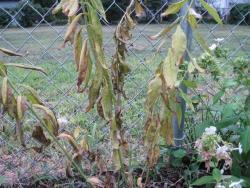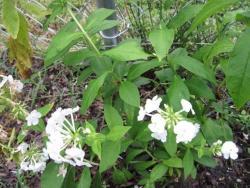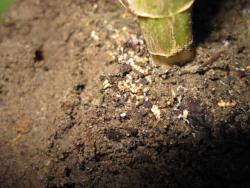Huh. Okay, well, I am relieved I don't have to blame the cats.

No guys live here, so that's out.
We don't use either artificial fertilizer or weed killer, but we have indeed had a very dry season. That grass is in the neighbor's yard. Our's looks a tiny bit better due to my watering occasionally.
What it looks like to me in every instance is the plant's roots reached a zone where something inhospitable to it lurked. What that might be? No idea. My housemate says she hasn't used Miracle Gro in years. I know her yard guys have used Roundup on the lawn but as of this spring they no longer do. I suppose they might have used it in the beds too (and I know it's a controversial subject whether it stays in the soil, some say no some say it does) -- even if so, even if it stayed that long, would there be those little pockets like that?
Neighbor, nope, she only has her grass cut every week or so and that's it.
As for the original plants, they were purchased at Southern States, were potted in some kind of potting mix, were healthy and watered at the time of purchase.
I'd guess they've been in the ground for a month.
Hmm. Well, I might just dig that one up tomorrow and see what I can see. I won't bother trying to take it back because it's not really on anyone's flight path to go there, so more hassle than it's worth. Plus I feel pretty sure it wasn't the plant or the care they gave it that is the problem here.
Thanks for the help! and if anyone else has a clue, I'm all ears.






